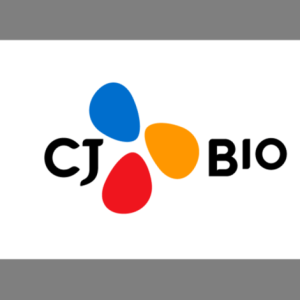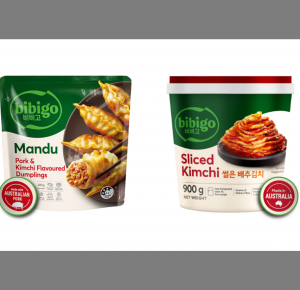
Look around you. How many types of plastic do you see? In the modern world, everybody knows how prevalent and widely utilized plastics are in our daily lives. Although plastic is extremely useful and convenient, it has recently emerged as a major culprit in environmental pollution. An alternative is urgently required, and today CJ Newsroom is exploring Polyhydroxyalkanoates (PHA), the possible future of eco-friendly plastics.
The Two Faces of Plastic
Plastic is made by refining fossil fuels like coal and petroleum to make chemical components such as ethylene and propylene, then processing polymer through mixing these substances together. The name comes from the ancient Latin world plasticus, meaning its etymology is rooted in “able to form shape”. It has a mold resistant characteristic gained through processing extrusion and injection.
Plastic production has increased more than 250 times in 70 years to about 400 million tons in 2020, compared to 1.5 million tons in 1950. As plastic production continues to rise globally, concerns about plastic waste are growing too. The materials that form natural polymer are generally decomposed by microorganisms. However, most plastics have a chemical structure in which microorganisms cannot decompose. As a result, the very thing that makes plastics so appealing is also their fatal disadvantage: they do not rot or decompose over time. Although eco-friendly biodegradable plastic is costly, there have recently been significant movements towards starting to utilize biodegradable plastic more widely. CJ Newsroom sat down with Byeong-hak Kim, a white biotechnology polymers specialist from CJ CheilJedang — a company that is evolving into the world leader in white biotechnology — to talk about whether eco-friendly plastic might be able to change our lives.
Types of Eco-Friendly Plastics

Q: Humanity’s development of eco-friendly plastic technology for the betterment of the environment is gaining more and more attention. What types of eco-friendly plastic are there?
Kim: Plastic can be categorized into four criteria depending on the raw material utilized and the contingent of biodegradation. Bio-Polyethylene (BioPE) is eco-friendly raw material but does not rot in nature. Polylactic acid (PLA) only rots at high temperatures and in high humidity conditions. There is also a polymer that can decompose underground called Polybutylene adipate terephthalate (PBAT). Unfortunately, it is made via chemical processing using fossil fuels and it does not rot in places like the sea.
Q: Are there any plastics made with natural raw materials that are 100% biodegradable under the ground, in the sea and in nature?
Kim: Yes. There is a substance called Polyhydroxyalkanoate, or PHA for short. It is an eco-friendly substance that is made from bioprocesses and uses eco-friendly materials. It decomposes in the ground and the sea within 6 months. Ultimately, PHA is the eco-friendly plastic we have been hoping to commercialize for a long time.
The 100 Year Rise of PHA
PHA is a polymer substance that microorganisms accumulate in their cells to use as an energy source. It was first discovered 100 years ago by Maurice Lemoigne, a microbiologist who worked at the Pasteur Research Institute in France in the late 1920s. Initially, PHA was only researched for medical purposes because it was difficult to handle and had, seemingly, low utilization potential. Hence, petroleum-based plastic grew to dominate the market due to its robustness, high quality and low production cost.
However, the situation is radically different now. The international community has started to regulate countries in their pollution of the environment and the United Nations recently committed to agreeing on the world’s first plastic pollution treaty by the end of 2024. Firms have begun to notice the future value and potential of PHA, the only plastic that completely decomposes in homes, in the ground and, amazingly, in the ocean. The industry that produces industrial materials or biofuels using bioplastics like PHA as their raw material is called the white biotechnology industry. The global bioplastic market size is estimated to be about 3.9 billion USD by 2023 and is expected to increase continuously.
The Global Competitiveness of CJ CheilJedang’s PHA
Q: As the white biotechnology sector gathers attention globally, companies specializing in plastic petrochemicals and fermentation are competing fiercely to secure technology and production capabilities. Is CJ CheilJedang ahead in the white biotechnology race?
Kim: Because it could play an important role in solving environmental pollution, interest in the white biotechnology industry has increased significantly, but the market size, technology and production capacity is still relatively low. However, investments from companies and governments all around the world have recently seen an increase.
It was in this context that CJ CheilJedang announced its entry into the white biotechnology industry in November 2020. It is now the market leader, having acquired a dependable, eco-friendly certification called a TÜV Biodegradation Certification in early 2021. Notably, CJ CheilJedang’s marine biodegradation certificate was the first ever in Korea and remains one of the few globally. In 2022, the company established a production system that has the capacity to produce 5,000 tons of PHA annually in Indonesia and has already commenced production.
Q: Only a few companies in the world have the technology to realize the commercial potential of PHA. What is CJ CheilJedang’s level of global competitiveness in the PHA sector?
Kim: CJ CheilJedang currently has the third largest production capacity in the world, but it is the only company in the world that has the technology and the patent to produce aPHA, a plastic material that is extremely flexible, on par with rubber. aPHA is the key to expanding the eco-friendly plastic market as it can overcome the disadvantages of standard biodegradable plastics, many of which lack flexibility and are too weak when exposed to external shock.
Q: What is the secret to this high level of global competitiveness that CJ has acquired in a relatively short period of time?
Kim: I think something called microbial fermentation technology is the key. CJ CheilJedang already has a lot of experience in biotechnology. The company is using the world’s number one technology and production capabilities that have so far been devised in the green bio field, such as acids and nucleic acids, and it has been doing so for decades. High quality and stable mass production are important factors in the white biotechnology industry too. CJ CheilJedang has strong purchasing power in the areas of biomaterials and global production technologies, compared to other companies. In addition, CJ has general levels of high global competitiveness that competitors cannot match in terms of global sales and the creation of demand.

Q: CJ CheilJedang’s PHA is receiving a good response in both production evaluations and final product evaluations. It is looking like the company will begin to sell PHA products around the world in the not-too-distant future. How is CJ laying the groundwork for this?
Kim: The company recently launched a new PHA brand called PHACT. PHACT focuses on B2B2C, not B2B. The marketing strategy is not just for companies. It is also designed so that consumers can be assured the product is reliable. Through this, the company plans to establish PHACT as an exceptional example of eco-friendly ESG strategies in the future.
CJ CheilJedang, Leading the White Biotechnology Industry
By 2025, the eco-friendly plastic market is expected to triple its 2020 market share. Biodegradable plastics are expected to spearhead this market growth. Although PHA currently possesses less than 1% of the market share, it is attracting attention for its potential rapid growth.

Q: What are CJ CheilJedang’s future plans for the white biotechnology industry?
Kim: We are planning to expand our business by developing customized technology that hopes to facilitate our limitless use of the product. Based on our customers’ needs, we are pushing investment in large-scale facilities through expanding aPHA, as well as investment in production facilities for scPHA.* We hope that one day the plastic products we use as in our household goods and cosmetic containers will be PHACT through and through, or PHACT Inside, as we say.
scPHA (semi-crystalline PHA): An ordinary PHA material, can be used as the main source of plastic and has excellent mold resistance.
CJ CheilJedang is actively responding to environmental pollution and persistently focuses on the research and development of fine-tuned, eco-friendly materials. CJ CheilJedang will continue to lead the white biotechnology market globally to provide insights for a sustainable future and the prosperity of humankind.











